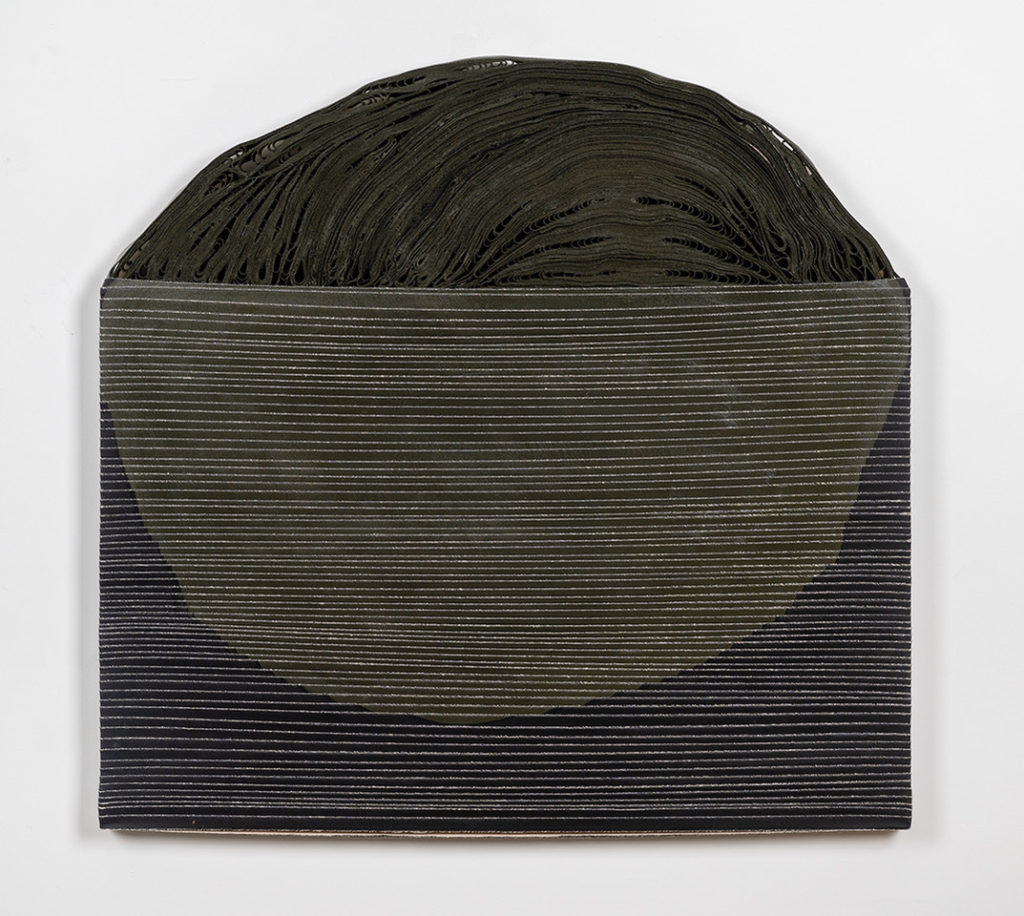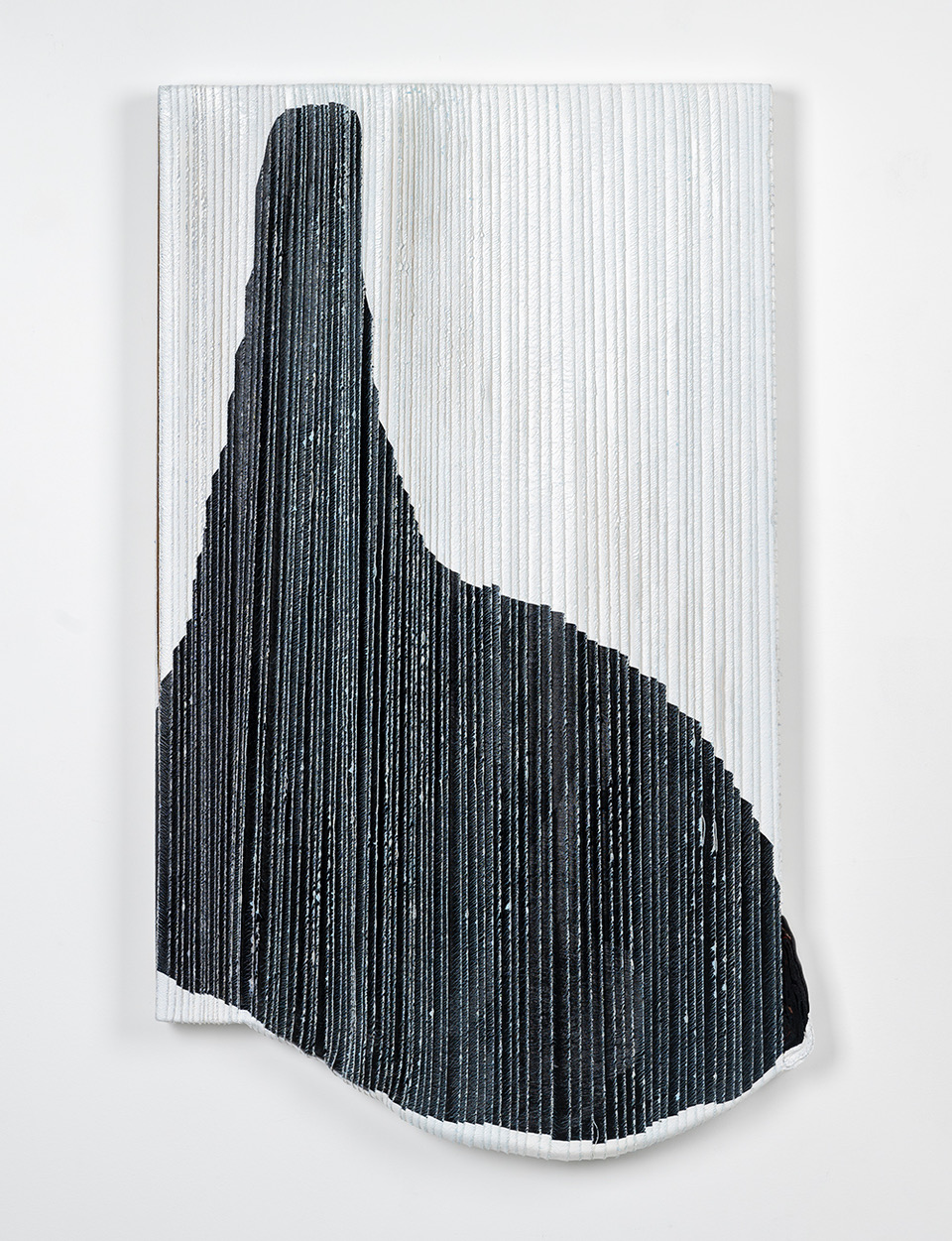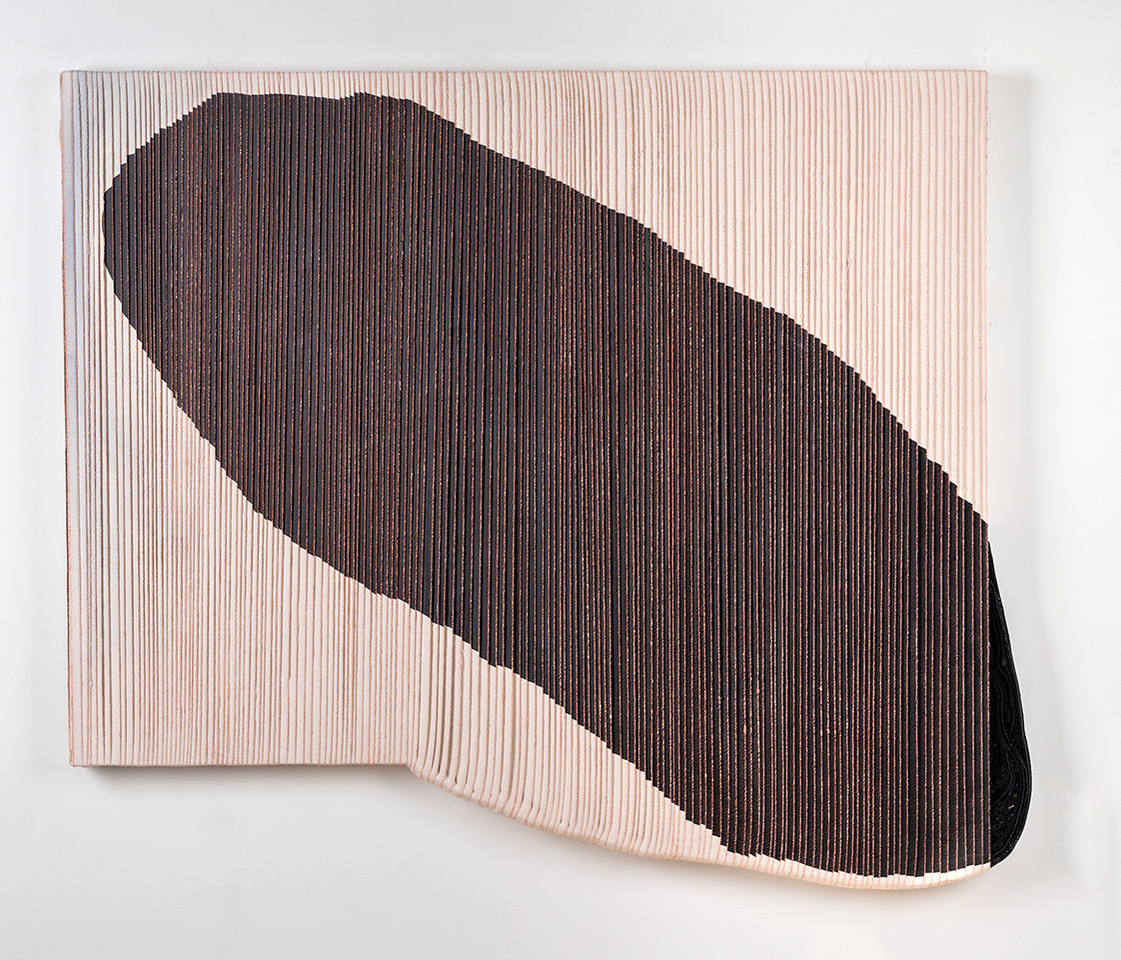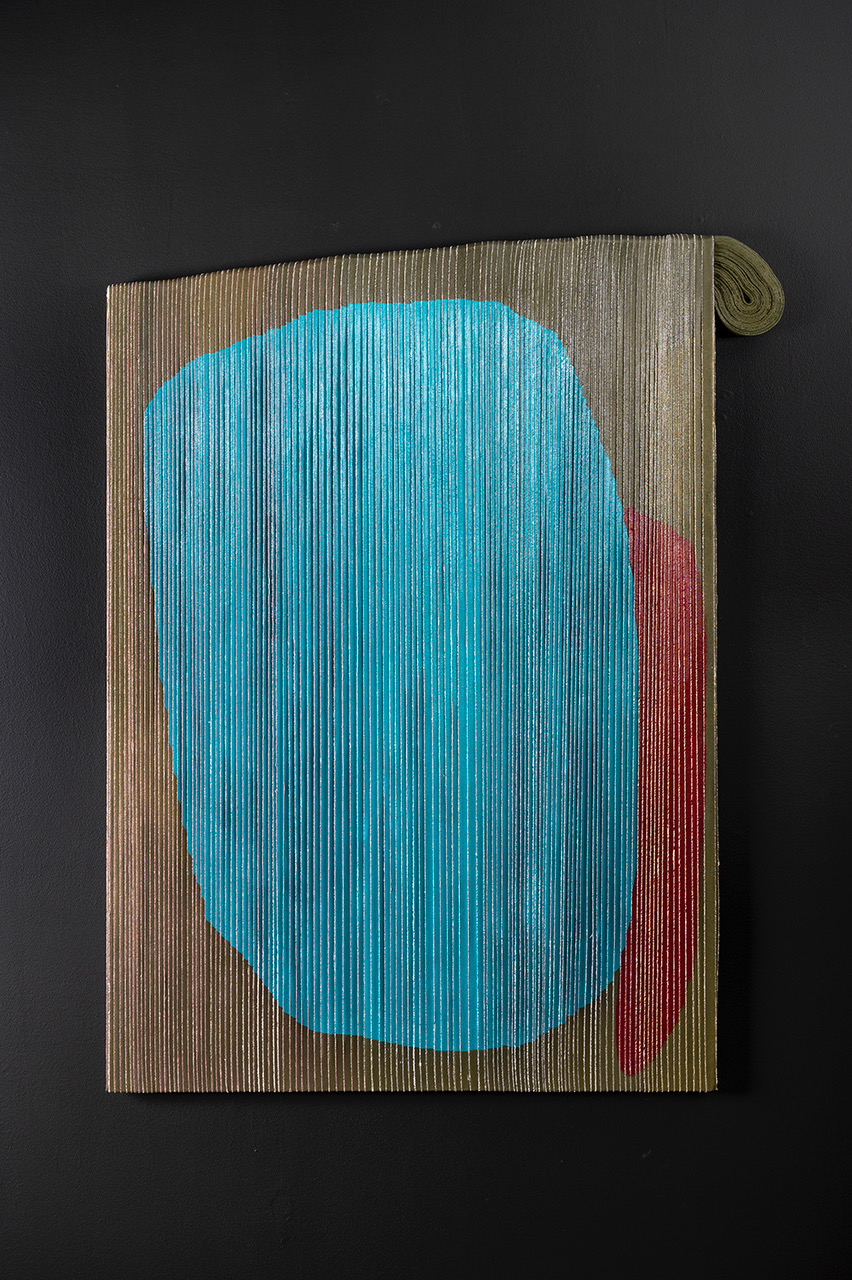
Jean Alexander Frater grew weary of traditional paintings, so she started to tear them up. “I wanted to preference the support in the hierarchy of the painting instead of the gesture,” she says. Painting has long been prized as more erudite than sculpture, drawing, printmaking, or craft. In her own work, however, Frater challenges this assumption by foregrounding the substrate—the canvas. “You only need three materials to make a painting: brushes, paint, and canvas,” she says. “I consider the materials themselves to represent the history of painting.” Frater calls her new work, “sculptural painting.”
She begins by painting 10-by-10-foot color fields, evocative of the works of Mark Rothko or Ellsworth Kelly, and then rips them to shreds. She then weaves them into geometric shapes and patterns, before painting over them. In Sea Drip, the original primary colors are hidden beneath white and black ribbons. But when seen from the side, cobalt blue tones emerge from cracks in the white and black paint on top. By shifting the viewer’s attention to the tactile qualities of the canvas, Frater asks us to consider why we favor some forms of art over others: “Whatever material was neglected before, maybe it’s time for it to have a stronger voice.”




